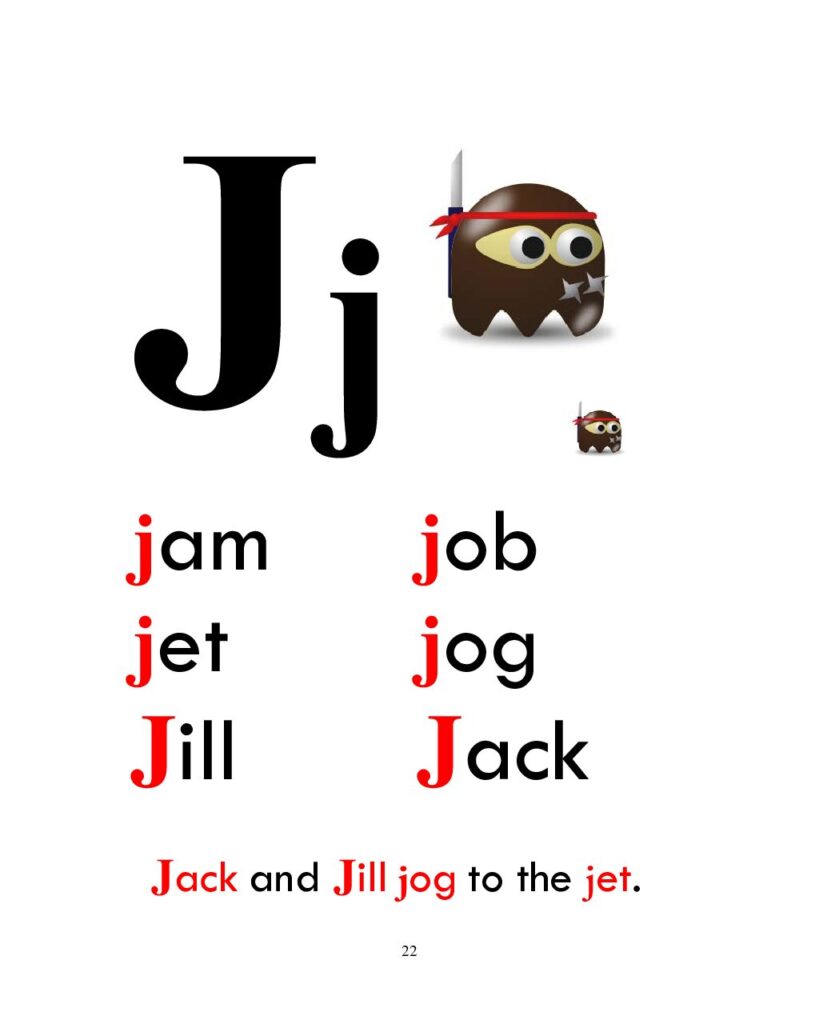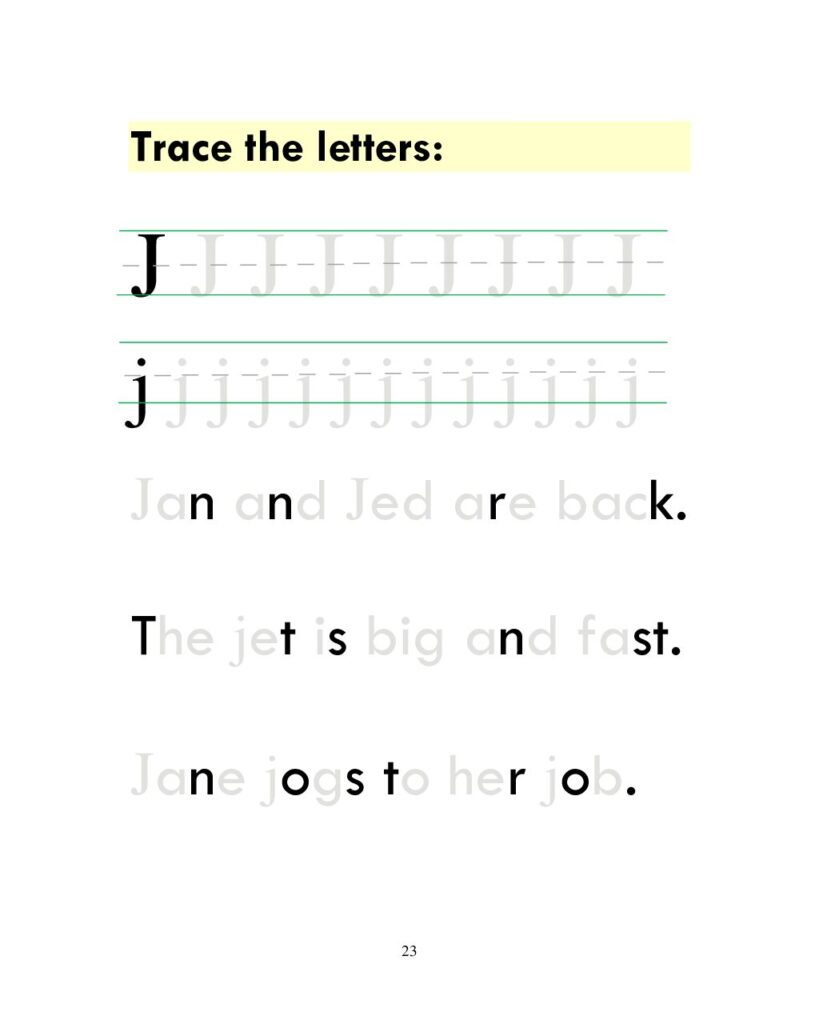Welcome to our beginner phonics lesson on the letter J! This ESL phonics lesson is designed to help young learners and ESL students understand and practice the sound and usage of the letter J. Phonics is an essential skill that forms the foundation for reading and writing proficiency. Mastering the letter J will help learners decode words more effectively, improve their reading skills, and build confidence in their language abilities. Let’s explore the letter J, its sound, and some engaging activities to reinforce learning.
ESL Phonics: Understanding the Letter J
The letter J is the tenth letter of the English alphabet and is a consonant. Recognizing the letter J in both its uppercase and lowercase forms (J and j) is crucial for young learners. The primary sound associated with the letter J is the /dʒ/ sound, as in “jump.”
ESL Phonics: The Sound of the Letter J
The letter J makes a voiced sound, which means the vocal cords vibrate when producing it. To make the /dʒ/ sound, place the tip of your tongue against the ridge just behind your upper front teeth, then push the tongue forward while vibrating your vocal cords. This sound can be found at the beginning, middle, and end of words, though it is most commonly at the beginning. Here are some examples:
- Beginning: Jump, Jelly, Jacket, Juice, Jam
- Middle: Enjoy, Project, Adjust, Major, Subject
- End: (The /dʒ/ sound typically does not appear at the end of English words)
The ESL phonics lesson below includes an introduction to the letter J, with several words, a sentence, and a page to practice tracing this letter. Students then practice tracing the letter J to complete several words in sentences. After completing this ESL phonics lesson, students should have a basic, functional understanding of the letter J, including its shape, capital and lowercase forms, and its positioning in sentences. Download this lesson for free, and you can also download our entire book of ESL phonics lessons on the alphabet, Phonics Monster: The Alphabet.


